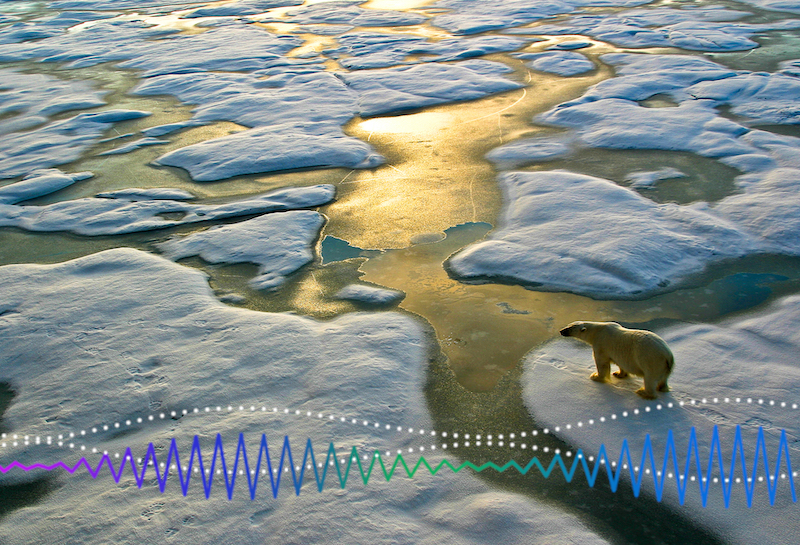The story of John Kelly’s farm in Wicklow proves one thing to be true: it doesn’t pay to leave space for nature.
John is an intensive dairy farmer with 350 acres and 250 cows near Blessington. He’s acutely aware of the pressures on farmers to shift towards more nature-friendly practices, but when he tried to leave areas for wildlife on his land, the public money he received from his farm subsidy, via the Department of Agriculture, was cut.
His experience mirrors farmers across Ireland who say that their attempts to leave areas for nature on their farms are penalised under the current way farm subsidies are paid.
“Any environmental stuff we are doing, we are giving up land classified as ‘productive’. We left stripes of nettles and thistles here for wildlife, but they were mapped out for deductions in my farm payment,” Kelly said. “Once you do it, it’s gone. Nothing I do environmentally will pay better than cows.”
The central subsidy, the single farm payment, is paid by the hectare; the more land you have, the more money you receive. But to get the full amount, the land must be so-called ‘agricultural land’ used to grow grass and crops.
When it comes to parcels of native woodland, bogland, ponds, scrubland or patches of wilderness, farmers face one of two choices: get rid of it, or get less money.
For Carlow farmer Kevin O’Hanlon, who lives near St Mullins on the banks of the River Barrow, the few hectares he has largely left to nature is little more than a costly indulgence.
“We’re not being paid for it; we’re being penalised,” he said of his thick hedgerows and scrub. “It’s probably the bones of €750 a year we’re losing on this – over 10 years, that’s €7,500.”
Kevin would get more public money if he drained the land, fertilised it with artificial nitrogen and sowed perennial ryegrass. But he wants to keep nature a part of the farm.
“The amount of wildlife it hosts is unreal. If you stay quiet for a second, you hear all the birdsong. It’s one of the nicest places on the farm.”
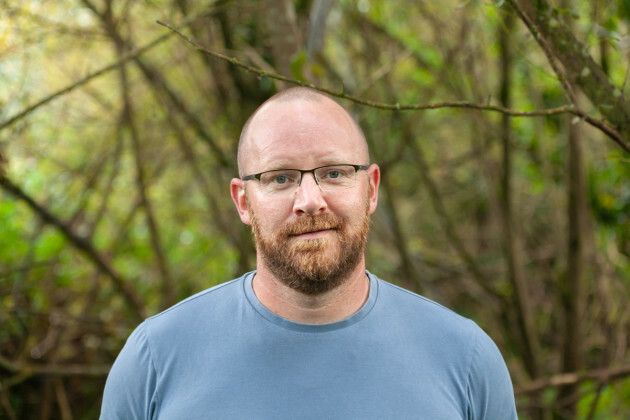
The EU’s Common Agricultural Policy (CAP) is a powerful tool to address Ireland’s twin biodiversity and climate crises. It is not uniform across the EU; Member States are given certain freedoms to implement it as they see fit.
In Ireland, the Department of Agriculture is the competent authority, and it has come in for sharp criticism from the EU for failing to direct public money, under CAP, in a way that aligns with our national biodiversity priorities; for example, for creating rules that incentivise farmers to remove scrub and vegetation which is often of high nature value.
What role does the multi-billion euro subsidy model – funded by the public – play in the current situation? Over the past two months, as part of its CASH COW investigation, Noteworthy examined the current make-up of CAP and if it offers a financial incentive for business as usual while also penalising farmers practising a nature-friendly approach.
The team spoke with farmers, agri-researchers, and ecology experts to piece together the roadblocks in the way of farmers creating more nature and climate-friendly farms and what direction CAP needs to go to put the natural world front and centre of the subsidy model.
We highlight how:
- Irish farmers continue to see annual payments penalised for maintaining biodiversity hotspots despite concerns raised by the State over the climate and biodiversity crises.
- The current subsidy model is failing to meet a range of biodiversity targets, with Irish and EU experts fearful nature will remain under severe pressure without an overhaul.
- €100 billion of CAP funds for climate action have had little impact on emissions reductions, according to a recent EU audit of the model.
In Part Two, we focus on concerns over payments for nature protection on farms and the potential for a results-based payment model for Irish agriculture.
Slice of the pie
The use of public money to fund agriculture emerged from a European farm subsidy system that dates back to the birth of the Common Agricultural Policy in 1962.
Following the devastation of the Second World War and the severe food rationing that went with it, farming and food production were top of politicians’ concerns. They decided that peace across a war-torn Europe would come with prosperity – and a full plate of affordable food for all.
European farmers were supported on price and were subsidised to produce more food, which could then be sold across EU borders. The public, who funded the policy, was promised food at reasonable prices.
This commitment to food security was matched with an eye-watering budget. The CAP budget, as a portion of the overall EU budget, has continued to reduce over the past 40 years – it was 70% in the early 1980s and this year will account for one-third of the budget at €55 billion.
The slice of the pie for Irish farmers was worth almost €1.2 billion in direct payments last year – these are called “Pillar 1″ funds and are 100% financed from the EU budget. There was also an additional €604 million in rural development money, known as “Pillar 2″ in 2020, co-financed with Irish state funds.
For many farmers, the direct farm payment underpins their income from the land. In 2020, public money made up to 157% of income levels on cattle rearing farms, 103% on sheep farms and 79% in tillage. Public money also flows into the dairy industry, with the basic payment accounting for 80% of all payments received across Ireland’s 16,146 dairy farms in 2020, according to Teagasc.
How the CAP money is spent has drastically changed since 1962. What began as payments to increase production and manage the market has shifted towards social, environmental and rural support. This Pillar 2 spending has increased over time and now makes up about a third of the total budget, and includes voluntary agri-environmental schemes.
Greening measures failing
Up to 30% of direct payments are linked to so-called ‘greening’ measures, which are farming methods that are supposed to benefit nature and reduce emissions. The three core greening measures are: crop diversification; maintaining permanent grassland; and for tillage farmers, setting aside 5% of arable land as ‘ecological’ areas for nature.
Farmers face severe penalties if they fail to meet these requirements. But evidence from the EU Court of Auditors in 2017 shows that the greening measures – which cost the public across the EU €12 billion every year – have utterly failed.
Meanwhile, the data from scientists paints a bleak picture of the scale of the climate and nature crises in Ireland. About 85% of EU protected habitats are in serious trouble, and scientists say that one of the main drivers is agricultural practices, such as pollution and unsuitable grazing, causing problems for over 70% of habitats.
Intact peatlands and wild grasslands are disappearing; one-third of wild bee species may go extinct by 2030; and a quarter of Irish bird species are in long-term decline. Water pollution is escalating, and wildlife species, such as the iconic curlew and corncrake, are teetering on the edge of extinction.
The agricultural sector is also the single most significant sectoral contributor to Ireland’s carbon emissions, responsible for around 35% of total emissions. One key driver is the ever-escalating number of dairy cows, which has increased by 40% between 2010 and 2020. It stands at 1.45 million today, and is forecast to grow by 200,000 between now and 2027, bringing the total to 1.65 million cows.
In June 2021, an EU Court of Auditors report found that €100 billion of CAP funds attributed to climate action had little impact on emissions. The report states that the CAP measures haven’t resulted in a reduction in livestock numbers, and it notes that Ireland has seen “substantial” emissions increases. Ireland has one of the highest greenhouse gas emissions per hectare of agricultural land in the EU, the report found.
Commenting on Ireland, the European Commission also recently said that nutrient discharges from farming into waterways are a “major problem”, with many habitats and species suffering.
“Greenhouse gas emissions from farming are on the rise (including those from grassland and peatland),” the report states. “Ireland is missing its targets for cutting ammonia emissions (on the contrary, they are increasing).”
Finger pointed at rigid rules
If the CAP is not working for nature, it’s also not working for farmers, who face the blame for destroying habitats yet find themselves encouraged by the Department of Agriculture to do “whatever is required” to maintain the land in an agricultural state, or else they face financial penalties. Farmers are told to ‘maintain’ hedgerows to prevent them from growing into their agricultural land, and ensure drains are working to avoid the development of wetlands.
An analysis carried out by a working group of agricultural, economic and biodiversity experts in late 2020 found that, aside from hedgerows, most other natural features on farms beneficial to nature do not qualify for public subsidies.
What is ineligible for subsidy payments is a roll-call of habitats that support an abundance of nature: bogland, native woodlands, scrubland, tall rushes, heather, ponds, ferns, rivers, streams, outcropping rock, quarries, sandpits, marshy or wet areas and unused patches in arable fields.
Every year, the Department of Agriculture (DAFM) uses aerial photography as part of its inspection regime to assess if farms are meeting the conditions laid down. Land deemed ineligible is circled in red and are excluded from payments. Farmers who need to increase their public payment must fill in ponds, drain wetlands, clear the scrub and burn the heather.
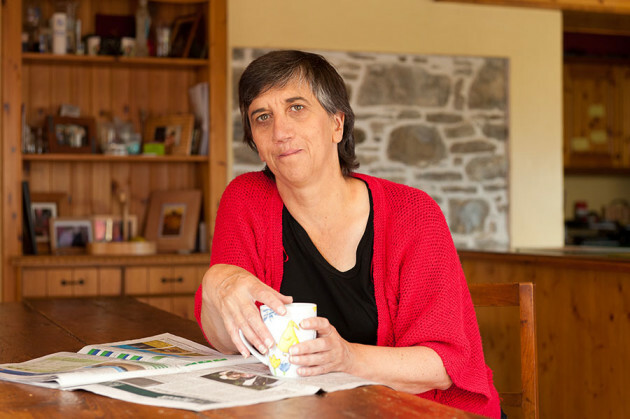
Not working for farmer or nature
Individual farmers are willing to take the financial hit to increase the life on their land. Kate Carmody’s 26 hectare farm lies along the dune-laden coastline of Beal in Co Kerry. She milks 20 cows (down from 70 a decade ago) and produces raw milk and cheese, as well as growing fruit, vegetables, hemp, flax and oats.
She allows her hedgerows to expand outwards and scrubland to grow, and as a result, has faced a cut in her single farm payment. “Any feature which I would consider very beneficial for wildlife is penalised,” she says.
“I’ve created ponds, scrub areas, and you have Department of Agriculture officials come out and say, ‘well look, this is scrub, you can’t be paid on that’. So systematically, every year, my payment is reduced. Over 25 years that adds up to an awful lot. You’re getting penalised for considering nature”.
She has witnessed the detrimental impact this has for nature on other farms. “I know a lot of big farmers who have grass from one end of the farm to the other, that have demolished every internal ditch and hedge,” she says. “There’s no wildlife, and they maximise payments because they ticked all the right boxes.”
Kevin O’Hanlon has tried to move towards a more ecologically-based model on a dairy farm he manages in Co Wexford. Instead of sowing fertiliser-dependent ryegrass for the cows to eat, he has switched to a more diverse range of grasses, such as chicory, clover and plantain. They naturally fix nitrogen into the soil – reducing the need for artificial fertilisers – and the grass diversity supports a range of species below and above the ground.
On his family farm in Co Carlow, where he keeps cattle and pigs, he has allowed peaty soil to become wet again, and the wildflowers bloom all summer. He has also left his hedgerows to grow year on year, and they now form a wildlife corridor on the edges of the farmland.
“A lot of farmers would come in here and drain this and put it into the perennial ryegrass,” he said. Still, he is willing to take the financial hit to give nature its place on the farm. “Hopefully, with the new CAP reform, it should change it so that we can let the hedgerows get a bit wilder,” he said.
For Kevin, the solution is simple. “We’re not looking for extra. Just don’t penalise us.”
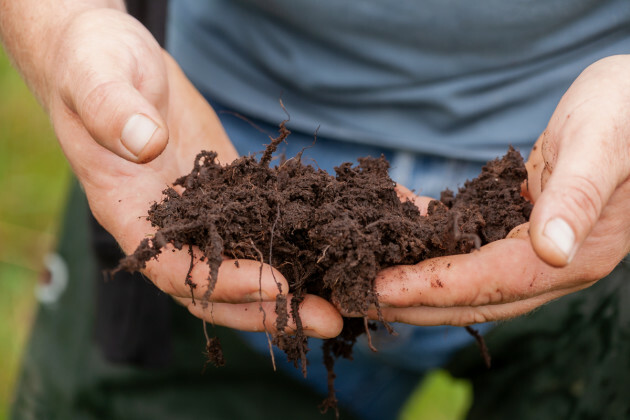
Farmers ‘struggling to get by’
In Connemara, the Mathews family have about 120 hectares acres in Moyard, Co Galway along the Atlantic coast. Their land is a mix of heath, marshland, broadleaf woodland and wetland. But they lose just under €3,000 a year in farm subsidies as 12% of their land is deemed ineligible for payments.
The land is ‘fantastic’ for nesting birds such as grouse, snipe and woodcock, says Josh Mathews, who helps out on the farm with his brother Lewis. “I have camera traps all over the farm which picks up a lot of wildlife, and the woodland is stuffed full of everything – pine marten, foxes, badgers, sparrowhawk, and we have seen owls in the past,” he said.
“It’s just such a lovely place to live. Farming is one of the main ways to look after our family home and make sure people can afford to live here. That is the main thing for all of us.”
The main deductions are for scrub. According to Josh, it includes anything from small bushy areas with gorse, to the woodland. “It would be stuff like the wetlands down near the beach where grazing would be quite destructive. And then you would get deductions for stuff like marsh. You can drain it, but that’s one of the worst things you could do for your bog,” he said.
Although they could earn more if they destroyed these nature-filled areas, Josh says that they will not do it. They’re lucky that their primary source of income is not currently coming the farm; Josh is mindful of other farmers who, for whatever reason, don’t have the luxury of turning down public money.
“Farmers are just getting by, especially farming the uplands. The margins are incredibly tight even with these payments. But if we were struggling to get by, we would have had to let that go. At least to a certain degree, we would have been looking for that extra three grand a year if we could [get it] even with the staunch interest in protecting the land.”
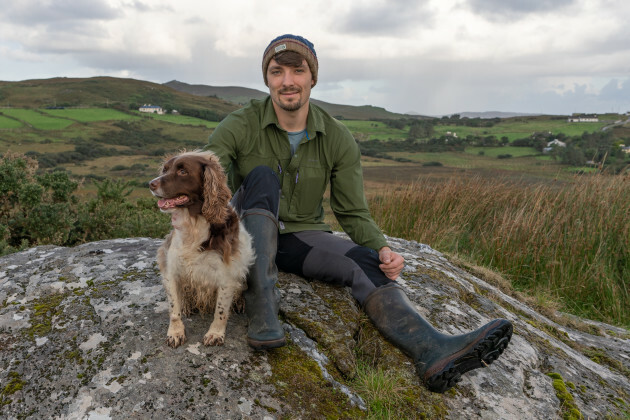
Loss of ‘undervalued’ high nature land
The loss of nature-filled farmland is a worry for Dr James Moran, a farm ecologist working in GMIT. “More than 30% of the area monitored has been lost in the last 10 to 15 years. It has led to further declines in farmland birds but also species dependent for nutrient cycling and pollination, such as our bees and butterflies and insects,” Moran said.
Dr Moran analysed the subsidy support given to farmers with nature-rich fields earlier this year in a report published with IT Sligo and Teagasc. It found that CAP poorly supports nature-rich farmland.
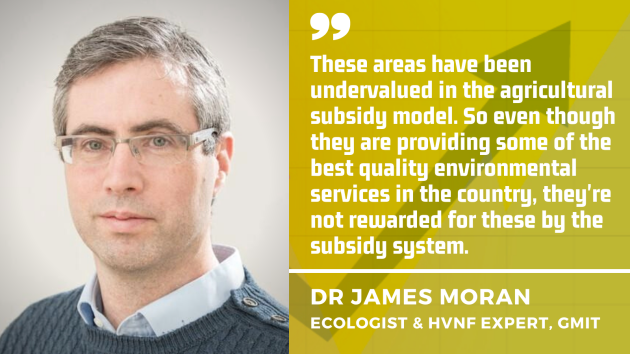
He says that this farmland should be prized instead of being seen by policymakers as a problem. Moran was also the author of a recent multi-expert paper that assessed a range of farms in Sligo and Wexford for the level of biodiversity that they support.
Land that was not intensively farmed showed the most significant protection for biodiversity and the highest potential for storing carbon.
Without protection or incentive through the subsidy model, Moran said, there is a danger that farming may intensify on such land, be converted to alternative land use, or be abandoned. In that scenario, the environmental and climate benefits would be lost.
“If you value the nature in these areas – value them for water quality, for flood alleviation, for carbon – then you should reward that value through the subsidy system,” Dr Moran said.
This undervaluing is reflected in the value of the land itself. Standing in his nature-friendly field, farmer Kevin O’Hanlon in Co Carlow points towards a neighbouring field that is more intensively grazed with perennial ryegrass. “The field above is probably worth €10-12,000 an acre, and this field is probably worth €5,000- 6,0000,” he said. “It’s literally half of it.”
Yet, O’Hanlon won’t flinch in his desire for more wilderness on his farm. “I’ve no intention of doing anything with this. Let them penalise me away. Hopefully, we won’t be penalised in the next CAP reform. The incentives have to be there for farmers.”
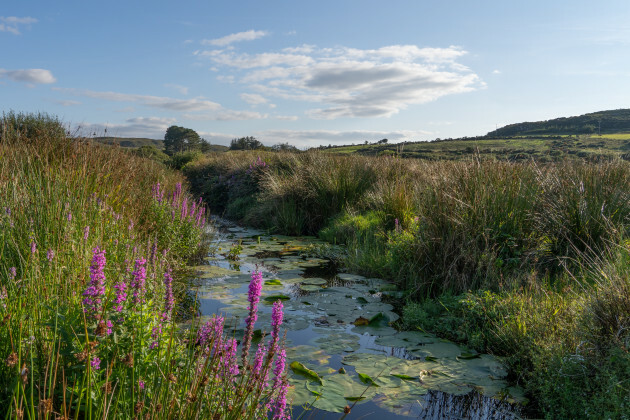
Clear value on nature urgently needed
The way that public money is paid to farmers is currently being negotiated under the next round of CAP. What’s clear is that without a reform of land eligibility rules, nature on farmland will continue to struggle. A recent analysis by a group of agricultural, economic and biodiversity experts said that a vital part of the next CAP lies in putting a “clear value” on agricultural land that contributes to environment and climate targets.
From the draft CAP plan, written by civil servants in the Department of Agriculture, it appears that changes to the eligibility criteria are on the way. Ireland has proposed that rushes will be eligible for payments, and that ‘up to’ 30% of land will also be eligible, as long as there are features beneficial to climate, biodiversity and water protection.
Farmers will, undoubtedly, welcome this development. For years, they have been told by the authorities to remove these features from their land to get their full payment; they now face the prospect of having to let them grow back.
This yo-yo effect of policy is frustrating, especially given the urgency of the climate and biodiversity crises. Nonetheless, it could make up to 55,000 hectares of land available for public payments, and if implemented in the public interest, it could help the environment at the same time.
Seeing through rose-tinted glasses
But will the new proposed CAP deliver for our environment? Not without significant changes, says MEP Grace O’Sullivan, the Parliament’s lead negotiator for the bloc’s latest Environment Action Programme. She says that while it fails to reflect the urgency of the crises we face, there’s an opportunity for Ireland to shape it more favourably to meet the needs of our environment and Irish farmers.
“There is a lack of sufficient safeguards to ensure that the agreed 25% of funds ring-fenced for environmental action will actually be spent on credible green initiatives,” she says. “From an Irish perspective, that means that Ireland can still ensure it designs the CAP in such a way that rewards Irish farmers for protecting and restoring biodiversity in a meaningful way,” she said.
For Wicklow dairy farmer John Kelly, he’s acting on his own. He’s sowed 16 hectares of diverse grasses to replace his mono-crop of fertiliser-dependent ryegrass. “There are huge pluses if it can be a win for the farmer and the environment,” says John. “If you can design an eco-scheme that does both these things, you’re away.”
This is also something that Kevin O’Hanlon would like to see for both himself and other farms, most of which he said have pockets that are left alone and left in nature.
“We still have to keep productive land for food,” he said. “But if every farm across the country did a small bit, it adds up to an awful lot across the country.”
In Part Two, we focus on payments for nature protection on farms and the potential for a results-based payment model for Irish agriculture.
This investigation was carried out by Niall Sargent of Noteworthy and farming and food journalist Ella McSweeney.
This article was originally shared by The Journal.



